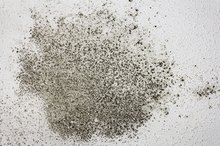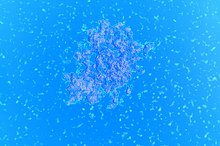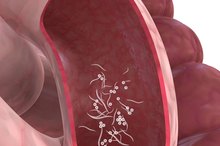A List of Fungal Diseases
Scientists once considered fungi plants before discovering that they are a distinctly different type of organism. Fungi feed on decaying matter, food and living organisms -- including humans. Fungi are abundant in the environment and some infect humans, causing disease. Surface infections such as athlete’s foot and fungal nail infections are common. Fungi can also cause internal diseases called invasive fungal infections. People with a weakened immune system are particularly susceptible to invasive fungal diseases.
Tinea Infections
Superficial fungal infections of the skin, hair and/or nails are extremely common. These infections -- known by the medical term tinea -- can occur almost anywhere on the body. Examples include ringworm, jock itch and athlete's foot. Over-the-counter antifungal creams or sprays are often effective for limited infections. But some of these infections, such as scalp ringworm, typically require treatment with a prescription medication to kill the fungus.
Candidiasis
Mold Related Lung Problems
Learn More
Candidiasis is a common type of fungal infection caused by different species yeast in the Candida family. Candida yeast thrives on moist surfaces of the body and is a common cause of vaginal infections. It can also cause an infection of the mouth or throat, known as thrush. Uncommonly, Candida invades the bloodstream and spreads to other areas of the body. People with a weakened immune system are most vulnerable to this type of invasive candidiasis, which can be life-threatening.
Aspergillosis
Aspergillus is a common fungus found in soil, decaying vegetation, insulating materials, air conditioning vents and dust. Aspergillus spores float in the air and can be inhaled into the nose and lungs. In most instances, Aspergillus spores cause no harm. However, in some people, invasive infections develop. People taking medicines that suppress the immune system are particularly vulnerable to this fungal disease. Aspergillus can infect the lungs and form growing fungal masses called aspergillomas. In some cases, Aspergillus moves from the lungs to the bloodstream causing a widespread, life-threatening infection. Aspergillus may also invade the sinuses, although this is rare in people with a healthy immune system.
Coccidioidomycosis
Diseases Linked to Black Mold
Learn More
Coccidioidomycosis -- also known as San Joaquin Fever or Valley Fever -- is a fungal disease caused by Coccidioides. This fungus inhabits dry areas, such as Arizona, Nevada, western Texas, central California and some areas of New Mexico. Inhalation of dust contaminated with Coccidioides spores introduces the fungus to the lungs. The Centers for Disease Control and Prevention reports 60 percent of people infected with Coccidioides have no symptoms. In those who develop symptomatic illness, headache, fever, muscle aches, cough and skin rash are common. Although most people recover from coccidioidomycosis within a few weeks, some develop a persistent lung infection or systemic invasion in which the fungi travel to and infect other parts of the body.
Histoplasmosis
Histoplasma capsulatum causes the fungal infection known as histoplasmosis. Most cases of histoplasmosis in the United States occur in the Mississippi and Ohio River valley areas. Bat and bird droppings stimulate the growth of Histoplasma capsulatum in the soil. Caves inhabited by bats, bird roosts and waste from poultry houses often harbor Histoplasma. Histoplasma spores are inhaled when digging or moving contaminated soil. Most people infected with Histoplasma capsulatum do not become ill. However, some people experience a respiratory illness characterized by a dry cough, fever, loss of appetite, muscle aches and chest pain. Uncommonly, this respiratory illness becomes chronic, causing progressive lung damage over months to years. In rare instances, Histoplasma fungi enter the bloodstream and infect other organs.
Related Articles
References
- Centers for Disease Control and Prevention: Information for Healthcare Professionals About Aspergillosis
- Merck Manual Professional Version: Aspergillosis
- Centers for Disease Control and Prevention: Information for Healthcare Professionals About Valley Fever (Coccidioidomycosis)
- Merck Manual Professional Version: Coccidioidomycosis (San Joaquin Fever; Valley Fever)
- Merck Manual Professional Version: Overview of Dermatophytoses
- Centers for Disease Control and Prevention: Candidiasis
- Centers for Disease Control and Prevention: Information for Healthcare Professionals about Histoplasmosis
Writer Bio
Dr. Tina M. St. John owns and operates a health communications and consulting firm. She is also an accomplished medical writer and editor, and was formerly a senior medical officer with the U.S. Centers for Disease Control and Prevention. St. John holds an M.D. from Emory University School of Medicine.









